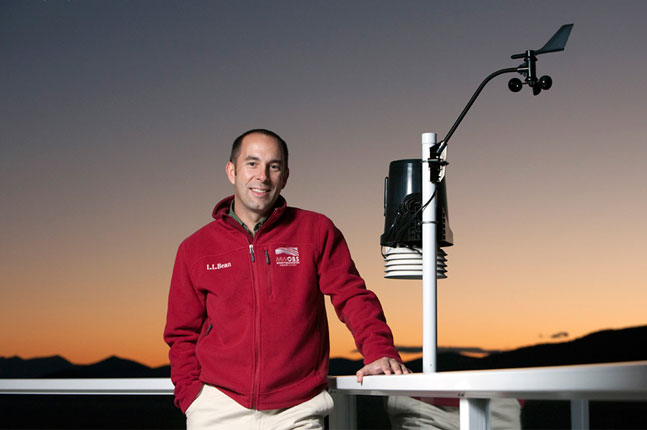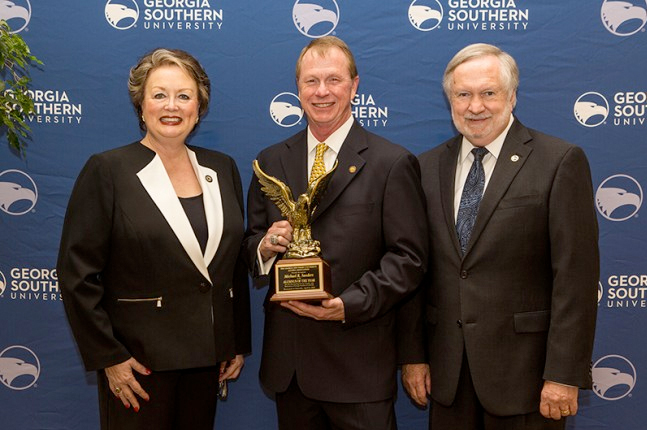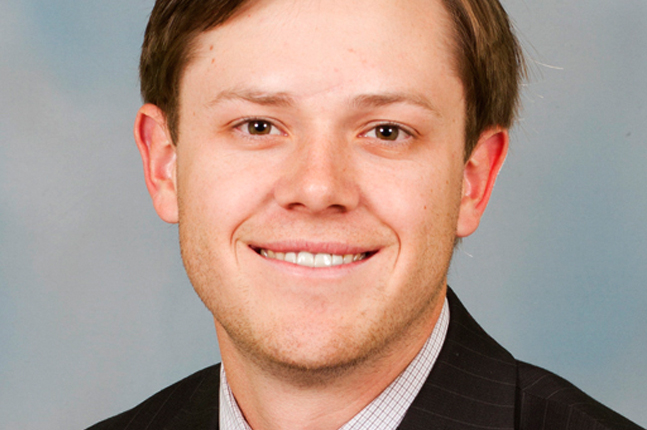It’s 16 below zero. The wind chill is 56 below. Winds are gusting to more than 70 miles an hour. It’s so cold clouds literally freeze.
It’s the kind of weather Scot Henley, Utah ’95, calls a “brisk” day at the White Mountain Observatory in New Hampshire, home of the “worst weather on earth.” Henley, executive director of the observatory, has the perfect job for the self-professed weather geek who began his college career studying meteorology.
“It’s fascinating work,” Henley said. “I’m lucky to be leading one of the most important non-profits in New Hampshire.”
The Mt. Washington Observatory is located at the summit of Mt. Washington in the White Mountains in New Hampshire. At 6,288 feet, Mt. Washington is the highest peak in the Northeast. The mountain is located at the convergence of virtually every major storm track in the U.S., making it an ideal location to observe weather and atmospheric phenomena.
“It’s other-worldly up there,” Henley said. “It’s cold, with 100 mile-per-hour winds, ice and fog.”
Regular meteorological observation began on the mountain in the late 1800s, and the observatory’s permanent home was established at the summit in 1932. Two years later, in April 1934, the region’s notorious chaotic spring winds started howling, building to a world-record speed of 231 miles per hour—the highest ever recorded on earth. Luckily, buildings at the summit are literally chained to the ground or built to withstand 300 MPH winds.
“From those earliest days until now, we’ve been able to capture seven decades of climate research,” Henley said. The observatory assists scientists examining climate change, private companies looking to test products in extreme conditions and educators looking to provide hands-on exposure to weather study.
With the advent of the Internet, the observatory can provide more distance learning opportunities around the world.
“It’s amazing—a class of students can contact us from Scottsdale, where it’s 105 degrees and it’s 40 degrees here and talk to young, passionate scientists about their work,” Henley said. “It’s really the only fully-staffed mountain weather station.”
The station is located in Mt. Washington State Park. During the summer, 250,000 visitors drive, hike or take a train to the summit. But when winter sets in, the road closes, the train shuts down and a snow tractor is the only way up or down.
“The crew piles in, along with a week’s supplies and up they go,” Henley said.
The ride can take as little as an hour to as much as four hours depending on weather conditions. The extreme weather is why the station needs to be constantly staffed. Wind and snow form rime ice—whipped-cream like ice formations that collect on every surface at the summit. The rime ice effects the operations of anemometers and other sensors and has to be knocked off. Also, much of the observations need a human touch to complement electronic measurements. The staff also takes humidity measurements manually using a sling psychrometer, a device containing two mercury thermometers that is spun around to provide a humidity reading.
In addition to scientists, volunteers ride up to cook and perform other tasks to allow the scientists to do their work.
“We wouldn’t be what we are today without volunteers,” Henley said. “They are a key part of the operation.”
Anytime you can stand up and make your point in a room of your peers, you will build your confidence. I grew as an individual at the Phi Delt house in Utah.
Although he’s made several trips to the summit, much of Henley’s work takes place at lower elevations—fundraising, managing the observatory staff, finding corporate sponsors and spreading the news about the observatory and its programs. The station was recently featured in National Geographic and has been on the Weather Channel along with various morning shows.
News coverage on climate change and the growth of weather coverage in general has helped build exposure for the observatory.
Henley has worked in the ski tourism industry and, during an earlier stint at the observatory, served as the organization’s first marketing manager.
Henley grew up in New England before heading west to complete college at Utah, where he joined the Utah Alpha chapter. Joining Phi Delta Theta helped him develop and hone the leadership skills needed throughout his career.
“Anytime you can stand up and make your point in a room of your peers, you will build your confidence. I grew as an individual at the Phi Delt house in Utah,” Henley said. “I also developed lifelong friendships with the Brothers there.”
When not working, two sons keep Henley and his wife, Michelle, busy. Living in the mountains, he enjoys outdoor activities, including skiing, snowboarding and bird watching.





